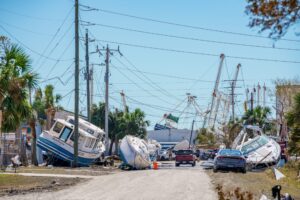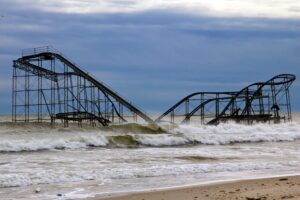Bouncing Back: Tourism After a Natural Disaster
Tourism is fascinating. Tourism is exhilarating. Tourism is also easily affected. By a lot of things – from Mother Nature to politics. Those of us in the tourism industry know all too well that in the blink of an eye, a natural disaster can turn a beautiful top-selling destination into a disaster zone. Think: the recent wildfires in Maui or Hurricane Idalia that hit the Florida Gulf Coast. As tourism experts we also know that coming back even better than before is not only possible, it’s probable.

Of course, in the event of a natural disaster, the health, safety and welfare of all those involved – from guests to hospitality workers – is top priority. If permitted to remain at the destination, providing shelter, food and emotional support to your guests is paramount. Communicate fully and truthfully with your guests before, during and after the disaster. Provide reassuring information: how to stay safe, where to go if they must evacuate or stay indoors, where to go for a hot meal if there is no power, alternative means of transportation if necessary, what facilities are open and what activities are available to them.

Let guests know you are committed to making the duration of their stay as close to their original expectations as possible. Be available for any questions or concerns they may have. If guests are ordered to evacuate, offer perks and discounts to encourage a return trip once the area is rebuilt. Help visitors schedule flights and arrangements to head home.
Once these needs are met, recovery marketing efforts step in – through agencies and Direct Marketing Organizations (DMOs) with clear-cut messaging that tactfully acknowledges the devastation. It is vital that the severity of the disaster is presented clearly and honestly. If one portion of the state is affected, but other areas are unaffected and open for business, let the public know before a whirlwind of misconceptions turns tourists away unnecessarily.
Natural disasters come in all shapes and sizes. Rebuilding can take weeks or even years. Keep your destination’s progress top of mind. Let your consumer know that you are working toward bringing them back as soon as possible. With tourism after a natural disaster focus on the positive. Put out media announcements featuring good news about the progress being made. Let travelers know about business re-openings, improvements and steps being taken to make the destination more resilient in the future.
Keep in mind that even destinations that have been totally demolished have made amazing comebacks. New Orleans returned to its former glory as a popular tourist destination within a decade after the massive flooding caused by Hurricane Katrina in 2005. At the recent U.S. Travel Association’s annual IPW conference held in California, it was announced that Discover Puerto Rico reported record revenue just two years after being pummeled by Hurricane Maria. In 2012, Hurricane Sandy went on record as the costliest natural disaster in the history of New Jersey, with economic losses to businesses up to $30 billion. Now, the state is booming in tourism, with 114.6 million total visitors recorded in 2022, up 18 million from 2021 and that rate is expected to grow.

Dana Communications has journeyed with countless world-class brands and destinations through good times and bad. We’ve had a front-row seat to tourism that has bounced back in the wake of catastrophes and has played a pivotal role in their recovery. In recent years, we’ve navigated our clients through a rollercoaster of pandemic pitfalls, many of them rebounding with visitation rates higher than pre-pandemic levels.
Stand under Dana Communications’ umbrella of strategy, creativity and media savvy to weather your next marketing challenge. Contact Lynn Kaniper at 609.466.9187 ext. 117 or lkaniper@danacommunications.com today.